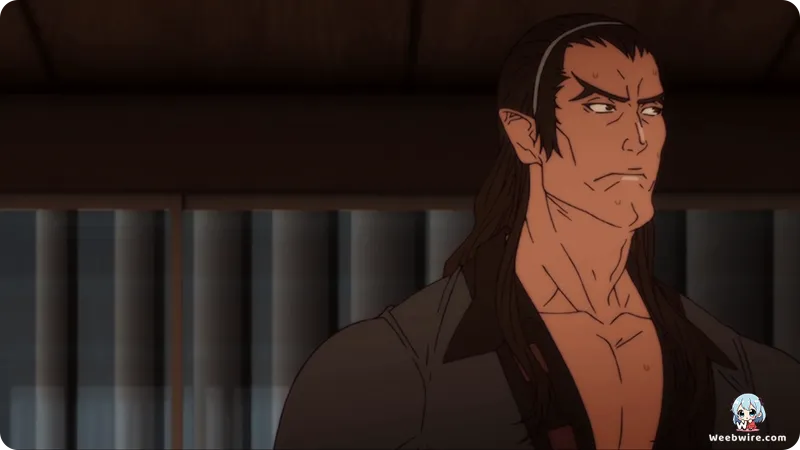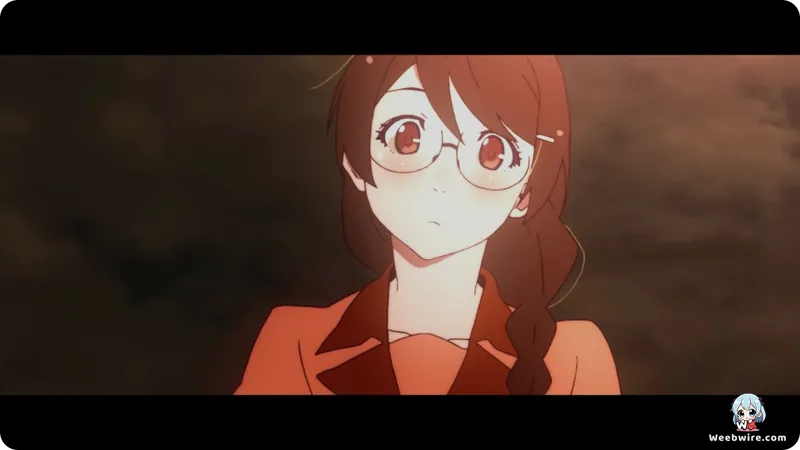Kizumonogatari Part 2: Nekketsu: Shaft's Visual Revolution and Araragi's Gripping Transformation

Step into the enthralling world of Kizumonogatari Part 2: Nekketsu, a cinematic masterpiece and cornerstone of the celebrated Monogatari universe. More than just an anime film, Nekketsu distinguishes itself with avant-garde animation and a profound psychological narrative that has redefined the genre. This crucial installment in the Kizumonogatari trilogy bridges Koyomi Araragi's perilous transformation into a half-vampire, vividly exposing the brutal realities of the supernatural realm he now inhabits.
Studio Shaft's Visual Prowess
Studio Shaft's unparalleled visual execution is central to Nekketsu's profound impact. Renowned for their distinctive style, Shaft pushes animation boundaries, crafting a film that is as much an art piece as it is a compelling story. Unlike typical anime adaptations that often rely on dialogue to convey Nisio Isin's verbose prose, Kizumonogatari boldly employs abstract imagery, stark minimalist backgrounds, and a vibrant kaleidoscope of colors. Intense psychological distress or sudden realizations are often depicted through surreal landscapes or dramatic shifts in perspective, compelling audiences to actively interpret underlying emotions rather than explicit verbal exposition. The deliberate use of stark white spaces and calculated camera angles, often highlighting subtle character expressions, creates an almost dreamlike quality perfectly complementing the film's supernatural premise.
The Evolving Bonds: Araragi and Kiss-Shot
At the heart of Nekketsu lies the complex, evolving relationship between Araragi and the enigmatic vampire, Kiss-Shot Acerola-Orion Heart-Under-Blade. A key detail for fans is the meticulous portrayal of Kiss-Shot in her compelling 'middle' form, that of a teenager. This is a significant departure from her initial adult appearance and later child-like manifestation (Shinobu Oshino). This transitional state powerfully underscores her vulnerability and the immense power she has lost, making her struggle profoundly relatable despite her monstrous capabilities. Similarly, Araragi's transformation is deeply psychological. The film brilliantly portrays his internal conflict as he grapples with his new vampiric nature and the moral compromises required to save Kiss-Shot. His brutal fights against vampire hunters are not just physical battles but a raw struggle against his own humanity and burgeoning supernatural instincts, choreographed with a gritty intensity that eschews typical shonen tropes.

Translating Nisio Isin's Genius
Nisio Isin's Monogatari novels are celebrated for their intricate wordplay and philosophical depth. Adapting this dense prose cinematically was a monumental challenge. Rather than relying on constant narration, Kizumonogatari Part 2: Nekketsu skillfully translates much of this internal dialogue into compelling visual cues and nuanced character interactions. Araragi's inner turmoil, for instance, is conveyed through strained expressions or environmental distortions. This visual interpretation maintains a brisk pace while delivering the intellectual depth expected. The film also expertly uses silence and ambient sound to amplify tension, a departure from the series' rapid-fire conversations. This unique storytelling technique makes Kizumonogatari a distinct viewing experience within the franchise, appealing even to those daunted by the series' dialogue-heavy nature.
Tsubasa Hanekawa's Crucial Role
Tsubasa Hanekawa's role in Nekketsu is equally fascinating. She provides a grounding element amidst the chaos, subtly hinting at her own complexities that unfold in later arcs. Her willingness to help Araragi, despite dangers, foreshadows her struggles. The film subtly highlights her intelligence and observational skills, particularly as she offers insights or challenges Araragi's perspective. Her iconic 'panty shot' scene, often debated for its ecchi elements, is actually a pivotal moment defining Araragi's internal struggle, showcasing his self-control and moral compass even in his transformed state.
Studio Shaft's Signature Touch
Studio Shaft's signature 'Shaft Head Tilt' makes subtle appearances, particularly in moments of contemplation. This beloved visual quirk, seen in works like Puella Magi Madoka Magica, serves as a subtle nod to the studio's unique artistic identity, showcasing their consistent vision and experimental approach to visual storytelling.
A Lasting Legacy
Kizumonogatari Part 2: Nekketsu not only delivered on its visually stunning predecessor but deepened the Monogatari series' lore and emotional stakes. It solidified Shaft's reputation for pushing animation boundaries and showcased Nisio Isin's narrative genius cinematically. Its unique approach, prioritizing visual and atmospheric storytelling, set a new standard for anime films. The film's exploration of identity, morality, and the consequences of power continues to resonate, making it a crucial and captivating entry for fans of supernatural or psychological genres. Its enduring appeal lies in its blend of spectacular action and deeply introspective character study, offering layers of meaning with each rewatch.
Credits
Kizumonogatari Part 2: Nekketsu
Author
Nisio Isin
Cover Art
VOFAN
Studio
Shaft
Publisher
Kodansha
Producers





